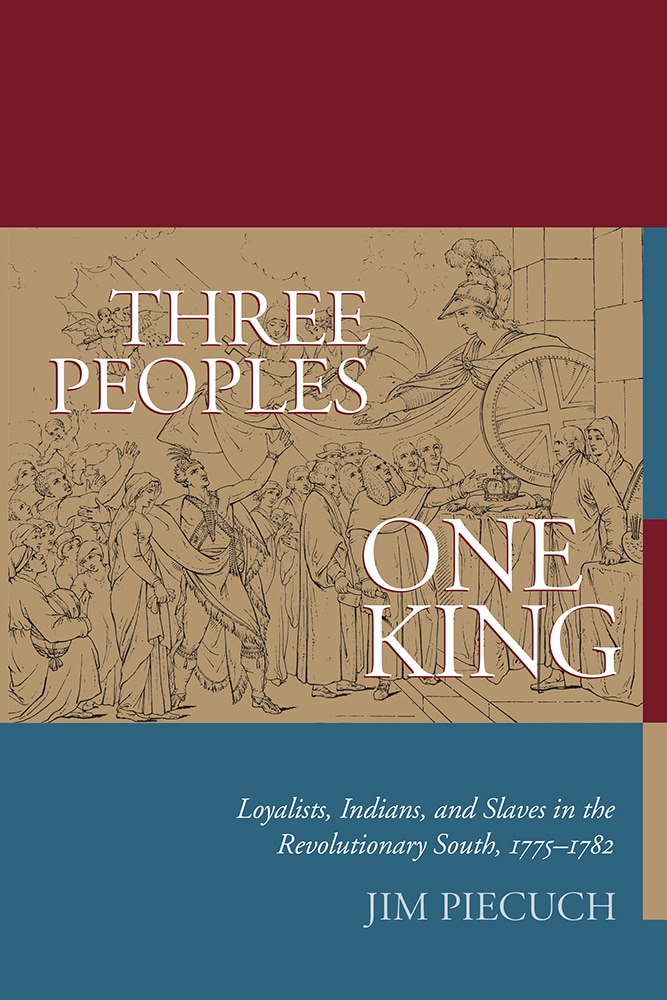Three Peoples One King

Featured in the “Magazine of the American Revolution Association” The Revolution evolved within an environment saturated with various ideologies and ethnicities. This diversity helped shape the process by which America broke free from British rule and shaped the national identity that would become known as American. Dr. Jim Piecuch, assistant professor of history at Kennesaw State University, Georgia in his work, Three Peoples One King (Columbia: University of South Carolina Press, 2008. Pp. 439. ISBN 978-1-57003-737-5), sets forth a systematic evaluation of slaves, Native Americans and Loyalists during the Revolutionary period and how they interacted with each other and the British Crown. How and why did the Revolution come to the southernmost colonies? Piecuch rightly examines the financial, commercial THREE and political conditions of PEOPLES South Carolina. In 1775, South Carolina was at the pinnacle of financial stability as Charleston was the fourth largest of the colonial cities and a leading commercial center. It is easy in the course of studying the Revolutionary period to hone in on major factions such as the British and Revolutionaries. However, an examination of less prominent groups is necessary to more fully understand the period and its events. African slaves played a prominent role in the commercialization and the resulting economic stability of Charleston, providing the labor on plantations whose crops served as the major source of trade and production. Piecuch examines how this role directly affected British relations in the South. In 1765, the institution of the Stamp Act by Parliament was seen as a direct infringement of the colonists, right to be taxed by their own provincial assembly. This aggravated the growing tension between the colonies and the crown, but would it be enough to sever loyalty to the mother country? In order to answer this question, Piecuch not only evaluates the colonial side of the issue but thoroughly looks at the British side as well. The second group Piecuch evaluates is the Native American Indians. Without a doubt, their involvement in the Revolution was critical to the ebb and flow of events. Their relationship with the Loyalists was paramount to the stability of British control in the South. The great majority of Indians, specifically the Cherokee, were a people ready to defend their position even if it meant the use of deadly force. One of the goals of the British in the South was to gain support from the Indians. If they could persuade the Indians to side with them, they would have one less group to worry about during the war, not to mention increased military strength. The British, Loyalists and Revolutionaries attempted in various ways to neutralize and win over the southern Indians. Piecuch also analyzes the miscalculations and results of such attempts and how they affected the Revolutionary period as a whole. One of the aspects that makes Piecuch’s work a fresh addition to the plethora of Revolutionary material is the way in which he positions the reader to understand Loyalist shortcomings from the British perspective. Although the Loyalists were devoted to the cause and persistent in executing their plans, ultimately these efforts failed. Thus, the question must be asked: how and why did these plans fail? Here is where Three Peoples, One King stands out among other works about the period. Piecuch examines this question from the eyes of the British and the Loyalists such that he reaches new conclusions on the Revolutionary period. Three Peoples, One King is welcomed in the discipline of early American history. The work not only sets forth a comprehensive analysis of the roles the various groups of British supporters played in the South, but also the way in which their interaction helped shape early American culture. Piecuch is a very competent scholar in Revolutionary history; the book’s readability is such that historians, students and general readers can thoroughly enjoy and savor its content. Download full Book Review